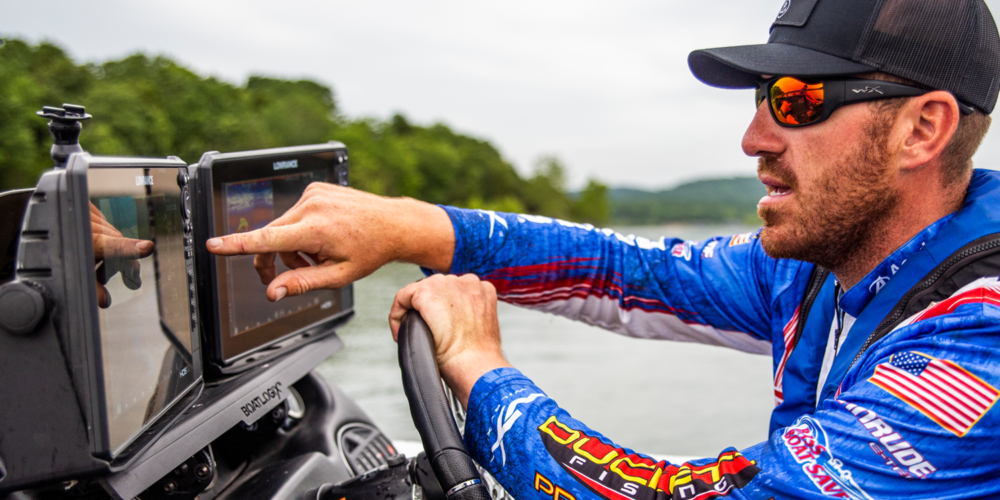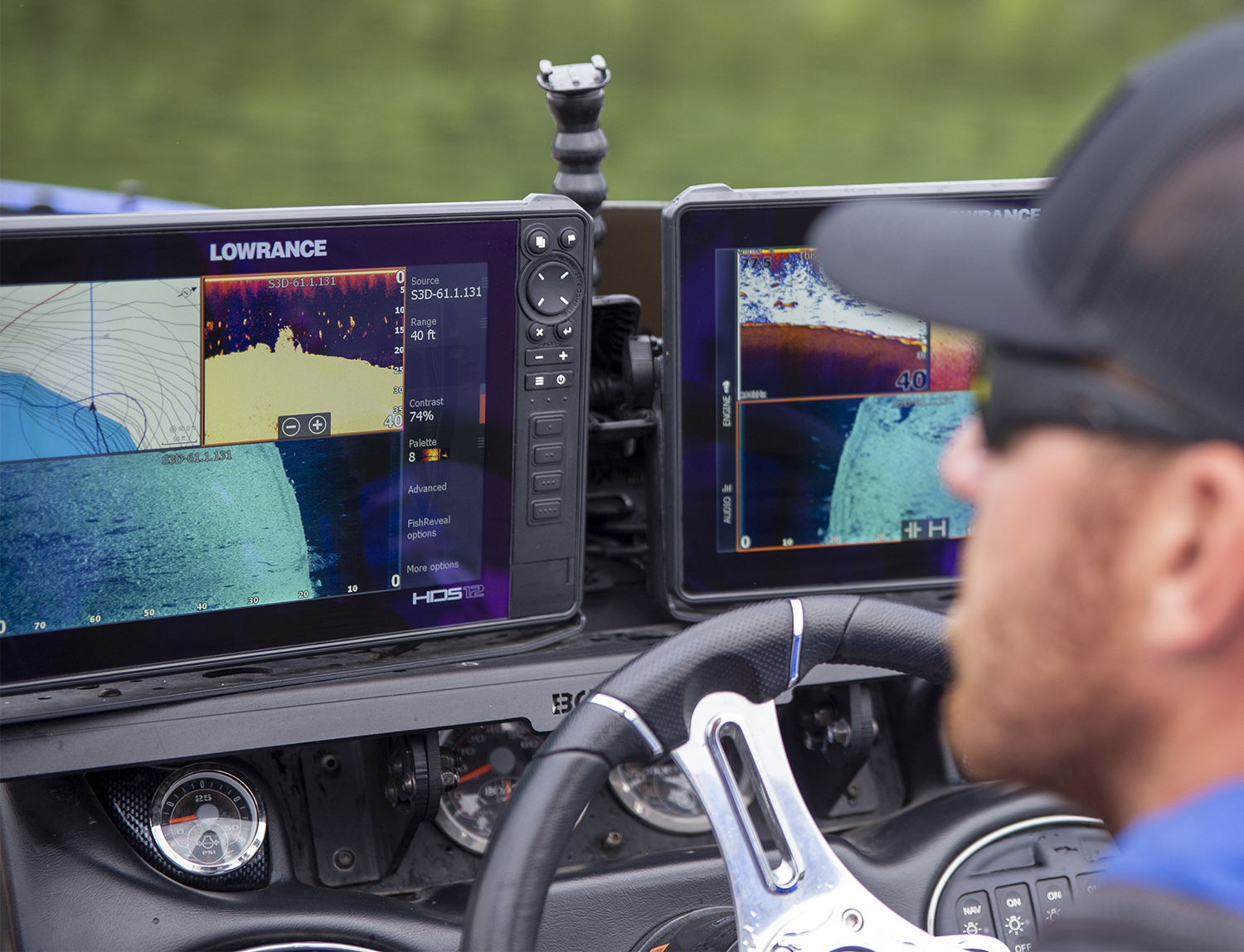Wheeler’s Electronics Tricks Will Help You Find More Fish

As marine electronics continue to advance, bass anglers are finding more ways to optimize them and locate fish. There’s a percentage of anglers who can’t live without them, another percentage who know enough to get by, and an even broader group who just wishes they could get better at reading them.
Tinkering with electronics is a timely topic for Jacob Wheeler, as he’ll soon be dialing in his new units for the upcoming season. No matter where you fit in the above categories, the Tennessee pro offers some advice to help you optimize your electronics and hopefully catch a few more bass in the process.
Note: Some of the terminology below relates to Lowrance electronics specifically, but many of his adjustments will apply to all major brands of electronics.
DownScan Contrast
When utilizing Lowrance’s DownScan, Wheeler adjusts his contrast to see bass more clearly. This setting can be changed as a percentage, and he generally keeps it between 65 and 70 percent.
“It depends on the lake and water clarity, but setting it at that level makes fish stand out,” Wheeler says. “They’re more distinct and white-looking, and the picture doesn’t get blown out as easily.”
StructureScan (Side-Scanning) Settings
The use of scanning to either side of the boat has forever changed how anglers search for bass, baitfish, and places fish like to hide. Wheeler knows that he can’t live without this technology, and adjusts his settings based on what he’s looking for.
“When I’m searching for fish, I have it set to 60 feet to either side of the boat because it shows much more detail,” he says. “If I’m looking for brushpiles, rocks, and things like that, I have it set out to 120 feet.”

The Trolling Motor Transducer
The use of bow-mounted electronics and using them to visually see fish below has turned into what many call “video game fishing,” and Wheeler is one of the best in the world at fishing this way.
“When I’m dropping down on them, I like to adjust my transducer settings to the 83KhZ because it gives me a broader beam, and I can see more of what is below,” Wheeler says. “The arches and dots from fish become bigger and easier for me to see.”
Many transducers also include 200KhZ and other frequencies built-in that help with extremely deep-water fishing or for a higher resolution picture. Still, for this purpose, Wheeler prefers the lower 83KhZ level.
Fishing Mode
Lowrance has settings built into their units that allow for quick changes based on the depth that anglers will be fishing. It applies to both freshwater and saltwater anglers, so one thing Wheeler does before he hits the water is switch into “Shallow Mode” when he gets a new unit.
“This isn’t shallow water in bass fishing terms; it applies to water less than 60 feet, which is where pretty much all of my fishing is going to take place,” he says.
Color Palettes
There’s an array of different color options for all of the Lowrance screens, and Wheeler says that the biggest factor is personal preference, as well and light conditions. But, he does have some favorites that he feels give him the best picture.
“For scanning to the side, I find that the blue colors make things stand out better,” he asserts.
When utilizing standard 2D sonar, Wheeler opts for colors that show the bottom in reds and browns, as he finds it is easier to detect both bass and bottom hardness.
Getting the most out of your electronics comes down to time on the water and experience looking at your screens. However, these tips from Wheeler can significantly speed up the learning curve.